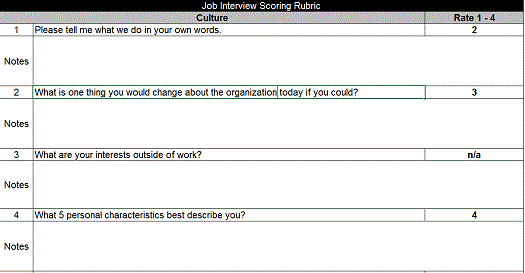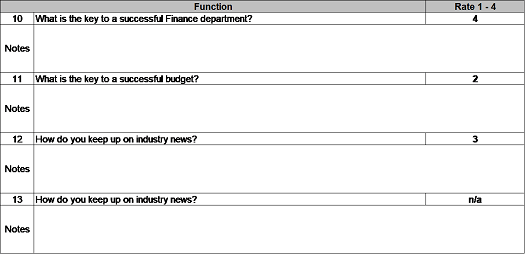Human Resources: Recruiting, Compensating and Evaluating Your Greatest Asset
![]() Any organization that brings together different people to work toward a common goal faces the challenge of coordinating and directing this group of individuals. As we have written in previous papers, employees are every organization’s greatest asset, but it can be difficult to keep staff aligned with the mission and motivated over the course of their career. In this resource, we will outline best practices of how the human resources department (or person charged with this task) can effectively recruit staff, clearly communicate compensation and benefits, and evaluate employees to ensure they are achieving their annual goals.
Any organization that brings together different people to work toward a common goal faces the challenge of coordinating and directing this group of individuals. As we have written in previous papers, employees are every organization’s greatest asset, but it can be difficult to keep staff aligned with the mission and motivated over the course of their career. In this resource, we will outline best practices of how the human resources department (or person charged with this task) can effectively recruit staff, clearly communicate compensation and benefits, and evaluate employees to ensure they are achieving their annual goals.
Recruiting Staff
The task of Human Resources is to set the vision for the company and develop means of encouraging productivity in addition to removing obstacles that may prevent this. A major task for any Nonprofit HR department is the acquisition and development of talented new employees who are not only qualified but also passionate about their role in the mission of the organization. As a framework for hiring, review the Giersch Group's resource on developing an effective organizational structure.
Because nonprofits are mission oriented, organizations often attract employees who are passionate about the organization. As employees are recruited, it is important to set expectations for both the organization and the employee. From an organizational standpoint, it can sometimes be easy to be swayed by a person’s enthusiasm for the mission which can lead to the organization overlooking key qualifications or skills that are needed for the position. Smaller organizations can also face the added constraint of not being able to offer salary or benefit packages that are on the same level as larger organizations. Because of this, organizations can be tempted to lower less qualified individuals with the assumption that they can train them on any needed skills.
One way to overcome both of these challenges is to develop a survey rubric that outlines the key skills that the job requires. As candidates are interviewed, each question is scored on a point scale of 1-4, which allows for a more objective scoring of candidates.
To develop a survey rubric, think first about the over-all culture of your organization. Are you a formal or informal organization? What communication style works best in your organization? Also include questions such as #1 and #2 below that will help you determine the amount of time the candidate spent learning about your organization before the interview.

Second, think about the specific function of the position. For example, if you are recruiting for a Director of Finance position, you will want to make sure that they understand both basic and complex financial issues. Questions for a position like this may include the following:

Build out the questions so that you have approximately 20 total. If you are hiring for a leadership or management position, you may want to include an additional five to seven questions on leadership style to ensure that the future leader will be a good fit with your organization. During the interview, take notes on the candidate’s responses, and then after the interview, go back and fill in a numerical score for each question. If the rubric is set up in Excel, you can easily sum and average the responses and give each candidate a specific numerical score.
The development of a rubric can also allow you to have more than one person interview a candidate and provide objective feedback on the fit of the person’s skills and passion with the organization.
The second aspect of hiring is ensuring that the expectations of the future employee are in alignment with the opportunities and expectations of the organization. Candidates can often be drawn to nonprofit work because of their desire to change the world. While every nonprofit ultimately wants to make the world a better place, sometimes the process is slow and challenging. In addition, not every position with a nonprofit is involved in front-line lobbying, direct service or other activities that feel more mission related than bookkeeping or data entry. In order to align expectations, it is important to ensure that each candidate – and current employee – is aware of how their specific job helps fulfill the mission of the organization.
Part of aligning expectations with the fulfillment of the mission includes clearly communicating job duties as well as each employee’s total compensation. While nonprofit organizations may not always be able to compete with businesses in terms of salaries or benefit packages, they may have other benefits that are appealing to their particular workforce.
When it comes to communicating compensation, the first step is to ensure that each employee receives a total compensation review. While most organizations provide an overview of employees’ salaries, many do not provide the cash benefit of vacation time, other paid time off, or other benefits such as health insurance, long-term disability, free or reduced parking or other perks. For example, some nonprofits may provide a generous holiday or vacation policy, and the cash benefit of these should be included an employee’s total compensation review. This can help employees realize that the total compensation that they are receiving is actually quite comparable to what others working in larger nonprofits or businesses are receiving.
It can also be helpful for the HR department to complete a formal or informal compensation survey of similar organizations each year to ensure that the salaries and benefits being offered are on par with what similar organizations are offering. A variety of free and paid salary surveys are available, and some networking groups may also provide their own analyses.
Measuring Effectiveness
After employees are recruited and compensated, the role of HR is to ensure that the effectiveness of each employee is measured on a regular basis. Similar to the interview rubric, the Giersch Group’s recommendation is to use a rubric that objectively measures an employee’s progress on their employment objectives.
First, review each employee’s job descriptions. The job description outlines areas of accountability and should be the road map of what the employee should accomplish each year. As such, the job description should be the primary document against which the employee’s performance is measured. Second, using the same format as the interview rubric, construct an evaluation that includes measures of progress toward each key element of the job description. It is also important to include questions that objectively measure the extent to which an employee is upholding the organizational culture and over-all mission of the organization. Again, these questions can be based off of the “culture” questions that were developed for the interview rubric.
The evaluation should be completed by the manager as well as by the employee, at which point the two should come together for a discussion. The use of a numerical score for each question can be helpful in providing a quantitative evaluation to an otherwise qualitative process. In addition, numerical scoring can help rank the over-all contribution of employees and can help management more clearly understand who may need additional coaching or training on core responsibilities.
Finally, focus on professional development opportunities for each employee. Investing in employees and demonstrating that you are committed to helping them be more effective can result in higher productivity and job satisfaction. Professional development can also be part of developing a career path for each employee and can demonstrate your organization’s commitment to your staff’s growth.
This resource has provided an overview of how human resources staff can proactively work to help recruit and retain effective staff. While often relegated to conflict resolution, human resources staff are crucial to maintaining the mission and the stability of the organization.
Articles for Further Reading
- Professionals for Nonprofits provide a free annual salary survey of nonprofit positions in New York and Washington, DC: http://www.nonprofitstaffing.com/salary-job-reports/
- The Nonprofit Times conducts a comprehensive national salary survey every other year that can be purchased online: http://www.thenonprofittimes.com/2014-salary-and-benefits-reports/
- PeopleInAid developed a manual that provides an in-depth review of ways to motivate both employees and volunteers working in nonprofit organizations. The article includes numerous suggestions for providing incentives that are not cash based: http://www.peopleinaid.org/pool/files/pubs/motivating-staff-and-volunteers-working-in-ngos-in-the-south.pdf
Contact us online to request a free consultation. We have offices in Milwaukee, Brookfield and Madison, Wisconsin.
